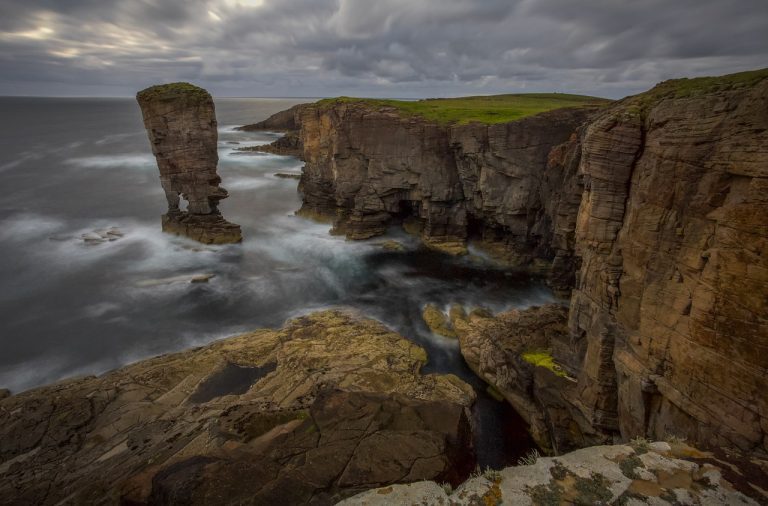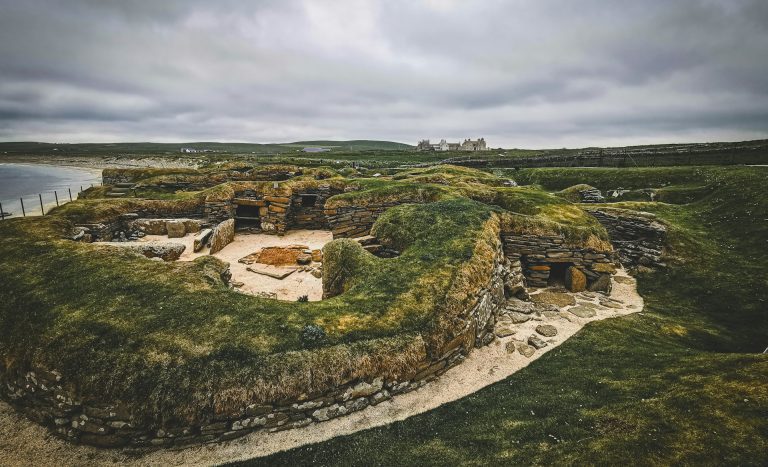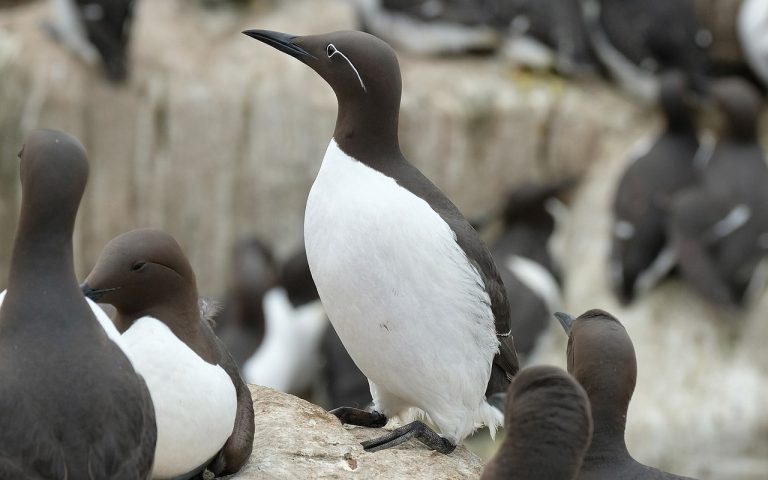The Orkney Islands
The Orkney Islands, located off the northern coast of Scotland, are a captivating archipelago steeped in rich history, ancient archaeology, and natural beauty. Comprised of around 70 islands, of which 20 are inhabited, Orkney is renowned for its Neolithic heritage, diverse wildlife, and unique landscapes.
Guillemots
St Magnus Cathedral
The Old Man of Hoy
Skara Brae
Neolithic Heritage and Archaeological Sites
Orkney is home to some of the most significant Neolithic sites in Europe, many of which are part of the UNESCO World Heritage Site known as the “Heart of Neolithic Orkney.” Some of the key highlights include:
Skara Brae: A remarkably well-preserved Neolithic village dating back over 5,000 years. Often referred to as the “Scottish Pompeii,” Skara Brae offers a glimpse into prehistoric life with its stone dwellings and ancient artifacts.
Maeshowe: A chambered cairn and passage grave, famous not only for its prehistoric significance but also for the Viking runes carved inside by later Norse visitors.
The Ring of Brodgar: A massive stone circle that rivals Stonehenge in its grandeur and scale. It forms part of a larger complex of ceremonial sites and is surrounded by beautiful, dramatic landscapes.
The Stones of Stenness: Another impressive stone circle located close to the Ring of Brodgar. This site is among the oldest stone circles in the British Isles.
Norse Influence
Orkney’s history is also heavily influenced by its Norse past. The islands were once part of the Viking kingdom and were under Norwegian control until 1468 when they became part of Scotland. Evidence of Norse culture is still present in the place names, traditions, and landmarks across the islands.
- St. Magnus Cathedral: Located in Kirkwall, the capital of Orkney, this stunning 12th-century cathedral was built by Norse craftsmen. It stands as a tribute to St. Magnus, the patron saint of Orkney, and is one of the best-preserved medieval cathedrals in Scotland.
Nature and Wildlife
Orkney’s landscapes are a blend of fertile farmland, sweeping coastal cliffs, and moorland, creating habitats for a wide variety of wildlife:
Birdwatching: Orkney is a birdwatcher’s paradise, particularly for those interested in seabirds. The cliffs and coastal areas are home to puffins, gannets, guillemots, and fulmars. The Orkney Mainland and smaller islands like Hoy and Westray offer excellent opportunities to observe these species in their natural environment.
Marine Life: The waters surrounding Orkney are rich in marine biodiversity. Orcas, seals, and porpoises are commonly sighted, especially around coastal cliffs like the spectacular Old Man of Hoy sea stack.
Rare Flora: The islands’ relatively mild climate and unique ecosystems allow rare flowers and plants to thrive. In the summer, wildflowers blanket the landscapes, adding vibrant colours to the scenery.
Outdoor Activities
For outdoor enthusiasts, Orkney offers numerous activities such as hiking, cycling, and exploring the beaches and coves. Some popular spots include:
The Old Man of Hoy: This iconic sea stack, towering nearly 137 meters (449 feet), is a well-known climbing destination and is a landmark of Orkney’s coastal landscape.
The Isle of Hoy: Known for its dramatic cliffs and rugged terrain, Hoy is a great island for hiking and wildlife spotting. It also has significant historical sites, such as the Hackness Martello Tower and the Scapa Flow Visitor Centre, which highlights Orkney’s role during the World Wars.
Orkney’s Culture and Festivals
Orkney has a vibrant local culture, with strong connections to traditional music, crafts, and festivals. Key events include:
St. Magnus Festival: Held annually in June, this festival celebrates the islands’ cultural heritage with music, literature, theater, and art events.
Orkney Folk Festival: This festival, also held in June, is one of Scotland’s most popular folk music events, drawing musicians and visitors from across the country and beyond.
Cuisine
Orkney’s food scene is known for its high-quality, locally sourced ingredients. Traditional dishes include:
Orkney Beef and Lamb: Raised on the islands, Orkney’s beef and lamb are prized for their quality and flavor, often attributed to the rich grazing land.
Seafood: With the surrounding waters providing an abundance of fresh seafood, Orkney is famous for its crabs, lobsters, scallops, and smoked fish.
Orkney Cheddar: The islands are also known for producing top-quality cheddar cheese, along with dairy products like butter and ice cream.
The Orkney Islands offer a mix of ancient history, wildlife, and traditional Scottish island life. It’s a destination perfect for exploring both culture and nature,
Orkney Blog ...
Looking for some extra travel tips & tricks?
Why not check out my travel resources or get in touch with your experiences





